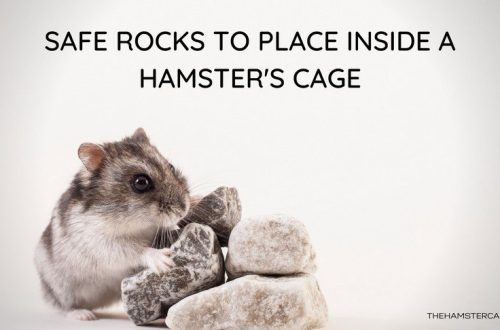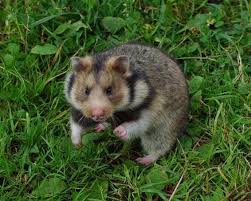
Hamster Radde (pre-Caucasian, Dagestan): description and photo
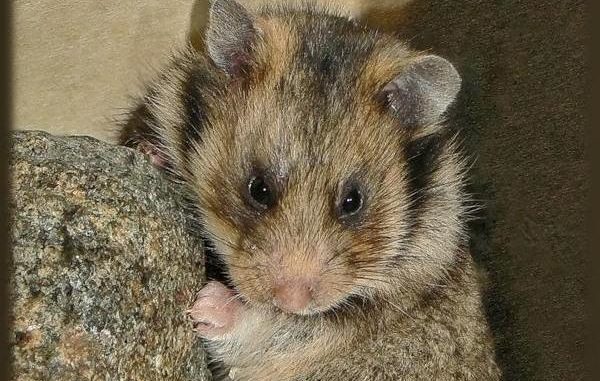
The second name of a cute rodent – Ciscaucasian hamster. In the people it is also called wild or Dagestan. This species, in comparison with the Syrian and Dzungarians, is much less common and is not intended for keeping at home.
What does Rudde the hamster look like?
Radde is outwardly similar to a relative from Syria, but differs in large sizes, which are comparable to guinea pigs:
- the body in length can reach 28 cm;
- tail – about 14 mm;
- standard weight – from 700 to 1000 g.
The color of the fluffy is two-tone: the upper part of the body is ocher, the lower is dark gray or black. Behind the ears and on the cheeks, light fur is often found. Given the length of the tail, it is quite difficult to see it in the thick and fluffy hair on the back.
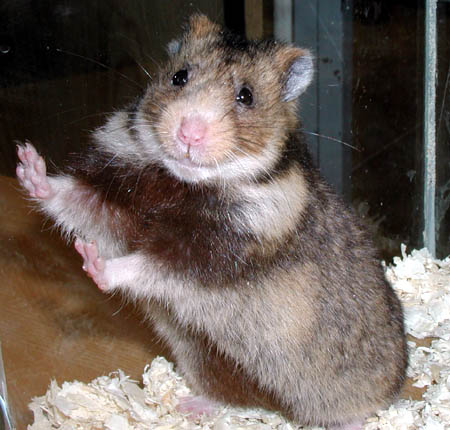
The coat of representatives of this species is soft and silky to the touch. Visually it looks very beautiful. Hamsters are born with sharp teeth that grow throughout their lives. Therefore, the rodent has to constantly look for opportunities for their grinding.
Habitat
The main habitat of this variety of hamsters is steppes and foothills. Most often, they settle in places rich in herbs, which not only make up the diet, but also help equip dwellings.
Dagestan hamsters are also found in forest areas, but the smart animal settles away from areas subject to flooding.
The natural range of these rodents:
- territory of Georgia;
- North Caucasus;
- Ciscaucasia;
- Stavropol region.
Lifestyle features
The activity of animals occurs at night, it is difficult to meet them during the day. In winter, the animals hibernate. Its duration can reach six months, however, every 2-3 days the rodent wakes up to eat and replenish energy and nutrients.
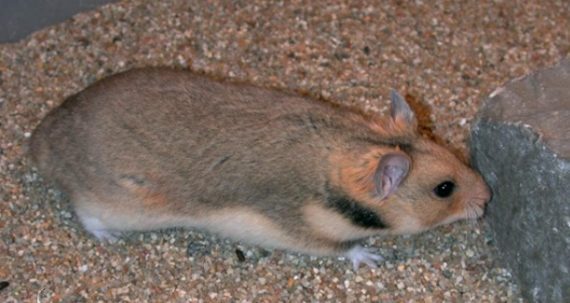
Hamsters live in burrows that have branched passages. Usually they break through the central tunnel to a depth of 1 m, after which the latter is divided into several horizontal ones, ending with “rooms” for housing and pantries for storing accumulated supplies.
The construction of dwellings is especially active during the period of growing up of new offspring. Hamsters are highly fertile. In harvest years and in the presence of comfortable weather conditions, females can bear offspring several times a year. Animals living in the plains give birth to babies four times. Mountain rodents have offspring twice a year.
The litter is numerous. Usually one female has from 4 to 12 cubs. It happens that up to 20 individuals are born at a time.
The natural enemies of Radde are:
- ferrets;
- falcons;
- crows;
- owls;
- foxes.
When danger arises, rodents break into a hole and freeze. If the tactic doesn’t work, then they do their best to defend. Under favorable circumstances, the animals live for about 3 years, however, they often die earlier in the claws of enemies or as a result of protective measures that farmers establish.
By nature, Ciscaucasian rodents are absolute individualists. Outside of the mating period, they live alone, gathering instead only for procreation. Males can fertilize several females, and carefully protect the territory of each.
Animals are clean. To maintain the beauty of the skin, they often take baths of sand or dust.
The basis of the diet of Radde is cereals and fodder crops. They regularly raid crops:
- millet;
- wheat;
- peas;
- rye;
- sunflower;
- corn.
Rodents also eat clover and alfalfa, root crops and pumpkin. Shortly before the onset of winter, animals begin to harvest supplies. In the cheek pouches, they are able to carry food, up to 20% of the rodent’s own weight.
Winter harvests sometimes reach 20 kg, so there is a legend that in tsarist Russia, peasants regularly went to burrows to confiscate provisions. This is often explained by the fact that Radde bite people.
Relationship with a person
For farmers and farm owners, hamsters are not charming animals, but the worst enemy of crops. Given the “vegetative” omnivorousness of animals, plantings in areas up to 50 square meters are exterminated. Radde are not squeamish about any plants, so farmers use all possible measures to combat furry beetles, including flooding holes.
According to a number of studies, this species carries a dangerous infection called tularemia.
After infection, the work of the lungs is disrupted in a person, the skin, larynx, eyes and lymph nodes are affected.
The long struggle of farmers with Dagestan hamsters led to the formation of distrust of animals towards humans. Even peacefully minded zoologists have to make an effort to ensure that the rodent makes contact and allows at least to stroke itself.
The above reasons make keeping Ciscaucasian hamsters at home almost impossible. Acquisition of Radde as a pet is not practiced.
You might be interested in learning about such unusual breeds of hamsters as the grasshopper hamster or the Eversmann hamster.
Hamster Radde – an inhabitant of the foothills of the Caucasus
3.3 (65.71%) 7 votes



